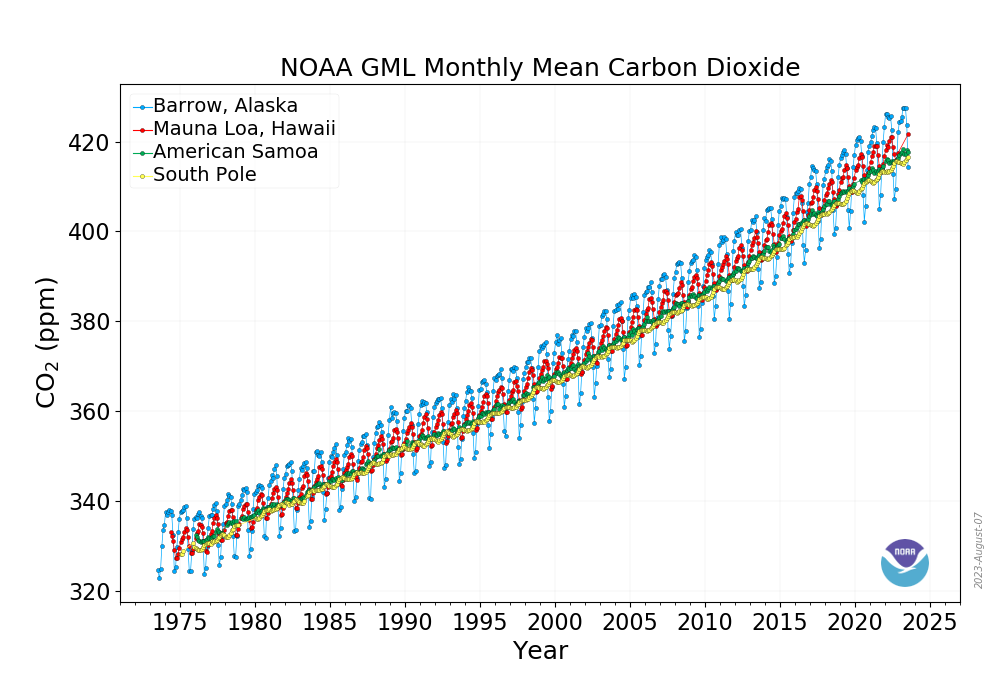50th anniversary of CO2 measurements at NOAA’s Barrow Observatory
July 24, 2023
In 1973, NOAA established the Barrow Atmospheric Baseline Observatory near Utqiaġvik, Alaska. Carbon dioxide measurements at the Barrow Observatory began 50 years ago, on July 24, 1973.
Operated by the Global Monitoring Laboratory (GML), the Barrow Atmospheric Baseline Observatory (ABO) is NOAA’s northern-most atmospheric baseline observatory and the longest continuously operating atmospheric climate observatory in the Arctic. Since its establishment, the Barrow Observatory has played an important role in Arctic research, providing long-term observations of atmospheric composition as it relates to climate change, ozone depletion, and air quality.
Climate measurements at Barrow are particularly critical, because global climate change is being experienced more rapidly in the Arctic than at lower latitudes. Barrow Observatory measurements include the longest continuous records of atmospheric carbon dioxide and fluorocarbon trace gas concentrations, aerosols, surface and total column ozone, and solar radiation anywhere in the Arctic.
The observatory is uniquely situated upwind of human habitation, in an isolated area which allows for the monitoring of air that has not been impacted by regional air pollution sources. This “clean air sector” receives air from anywhere between 100 to 5,000 miles upwind of the station and from regions where there is no habitation or transport corridor.
Collectively, Barrow and NOAA’s other atmospheric baseline observatories monitor and measure the global atmosphere. In addition to Utqiaġvik, NOAA observatories are located at Mauna Loa, Hawaii; the South Pole, Antarctica; and American Samoa. GML operates all of NOAA’s baseline observatories.

Researchers in GML sample Arctic air at the Barrow ABO, compare it with air sampled at NOAA's three other remote observatories, and then compute a baseline from which they can derive changes in time and space. When compared with air at other collection points, this baseline can highlight local and/or regional differences. To avoid introducing biases into the data, NOAA researchers have maintained consistent sampling methods since 1973.
Today, the Barrow Observatory supports more than 200 measurements enabling critical research on changes in atmospheric composition and the Arctic region, including greenhouse gases, ozone-depleting chemicals such as chlorofluorocarbons, air pollution events from Eurasia known as Arctic Haze, stratospheric ozone depletion, and advancing snowmelt dates and lengthening of summers along Alaska's North Slope.
In addition to housing NOAA’s atmospheric research, the Barrow ABO hosts more than 20 cooperative projects from universities and federal agencies, including NOAA’s National Environmental Satellite, Data, and Information Service, the Department of Homeland Security, the Department of Energy, the Environmental Protection Agency, U.S. Geological Survey, and universities.
Measurements at the Barrow Observatory are anticipated to continue for at least the next 100 years and are critical to NOAA’s mission of monitoring the state of the global atmosphere and changes over time. Data collected at the Barrow ABO are available online.
